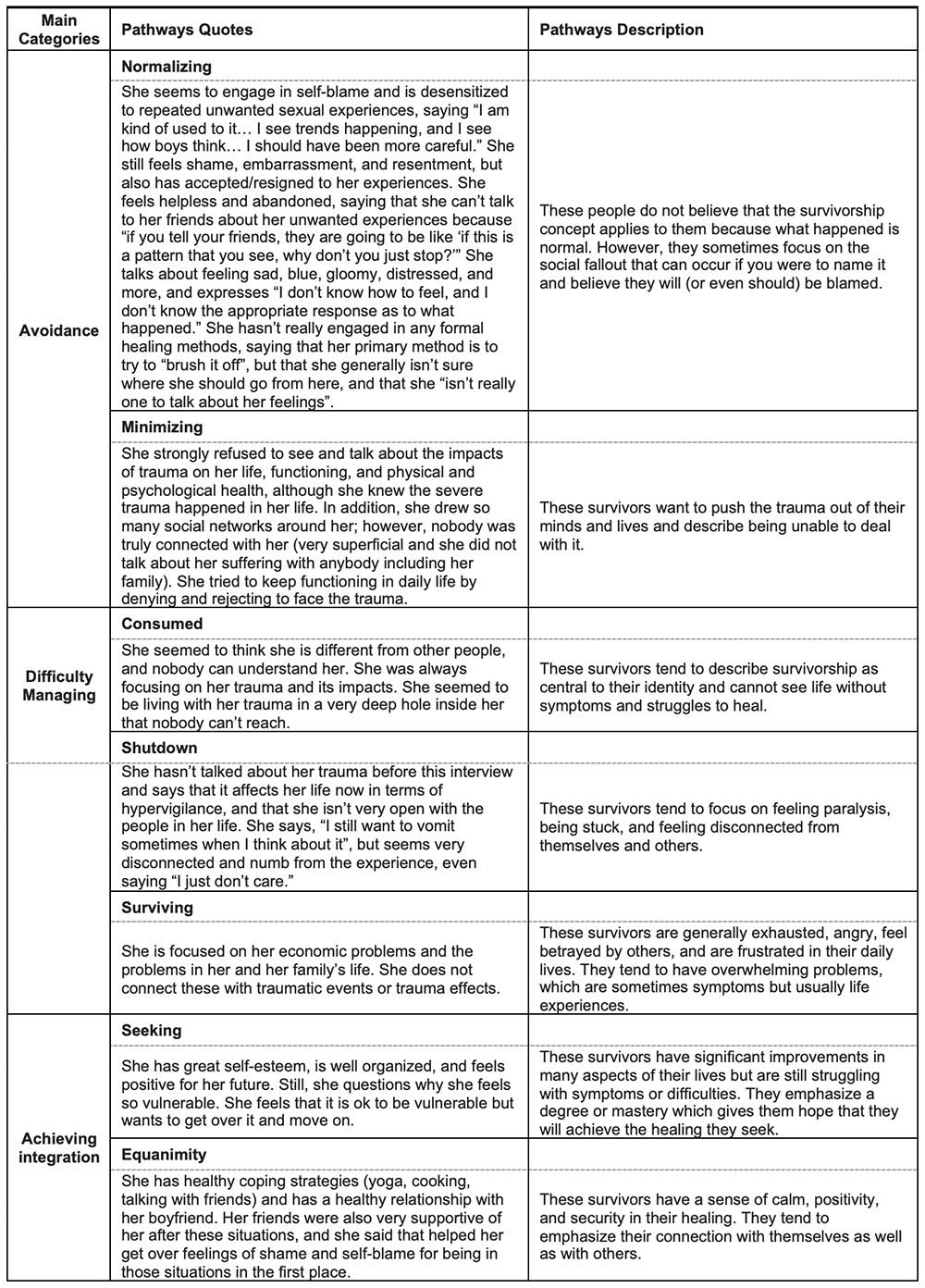Trauma Recovery Rubric: Understanding recovery pathways in 4 countries
Dr. Sachiko Kita, PhD, CNW, RN, PHN Senior lecturer in Family Nursing
An interdisciplinary, international study developed the Trauma Recovery Rubric to understand recovery pathways for gender-based violence survivors.
It is estimated that 1 in 3 women worldwide will experience gender-based violence in their lifetime. That’s why research is beginning to examine how survivors recover from gender-based violence. But little is known about the diverse recovery paths or how they relate with other variables that would increase distress or improve recovery. An interdisciplinary study with multiple international sites was formed to develop the Trauma Recovery Rubric [1]. Besides Dr. Sachiko Kita from the Department of Family Nursing at UTokyo, researchers from Greece, Turkey, and the United States developed and used this rubric to classify survivors’ trauma pathways to recovery in 4 countries.
The researcher recently published about the 3 phases of this study. Phase 1 was the initial development of the rubric, phase 2 was refining and calibrating the rubric, and phase 3 was using the rubric in four countries. This study discovered 7 recovery pathways with 6 domains including normalizing, minimizing, consumed/trapped; shutdown or frozen, surviving, seeking and fighting for integration; finding integration/equanimity. The table below shows quotes from the survivors and comments from the researchers about the pathways. Researcher found that depression, but not post-traumatic stress disorder (PTSD) was related to most of the domains.
This study proved that the Trauma Recovery Rubric can be used in diverse cultural settings. The rubric is a survivor-centered and trauma-informed way to understand different survivor recovery pathways that impact the health outcomes of the survivors. Overall, this rubric will be a foundation for the future of understanding the differences in how survivors heal and what drives the differences. This cross-cultural tool helps us understand how to best meet the survivors’ needs and may improve survivor care.

Reference:
- Koutra K, Burns C, Sinko L, Kita S, Bilgin H, Saint Arnault D. Trauma recovery rubric: A mixed-method analysis of trauma recovery stages in four countries. International Journal of Environmental Research and Public Health. 19(19), 10310. 2022. doi: 10.3390/ijerph191610310.


